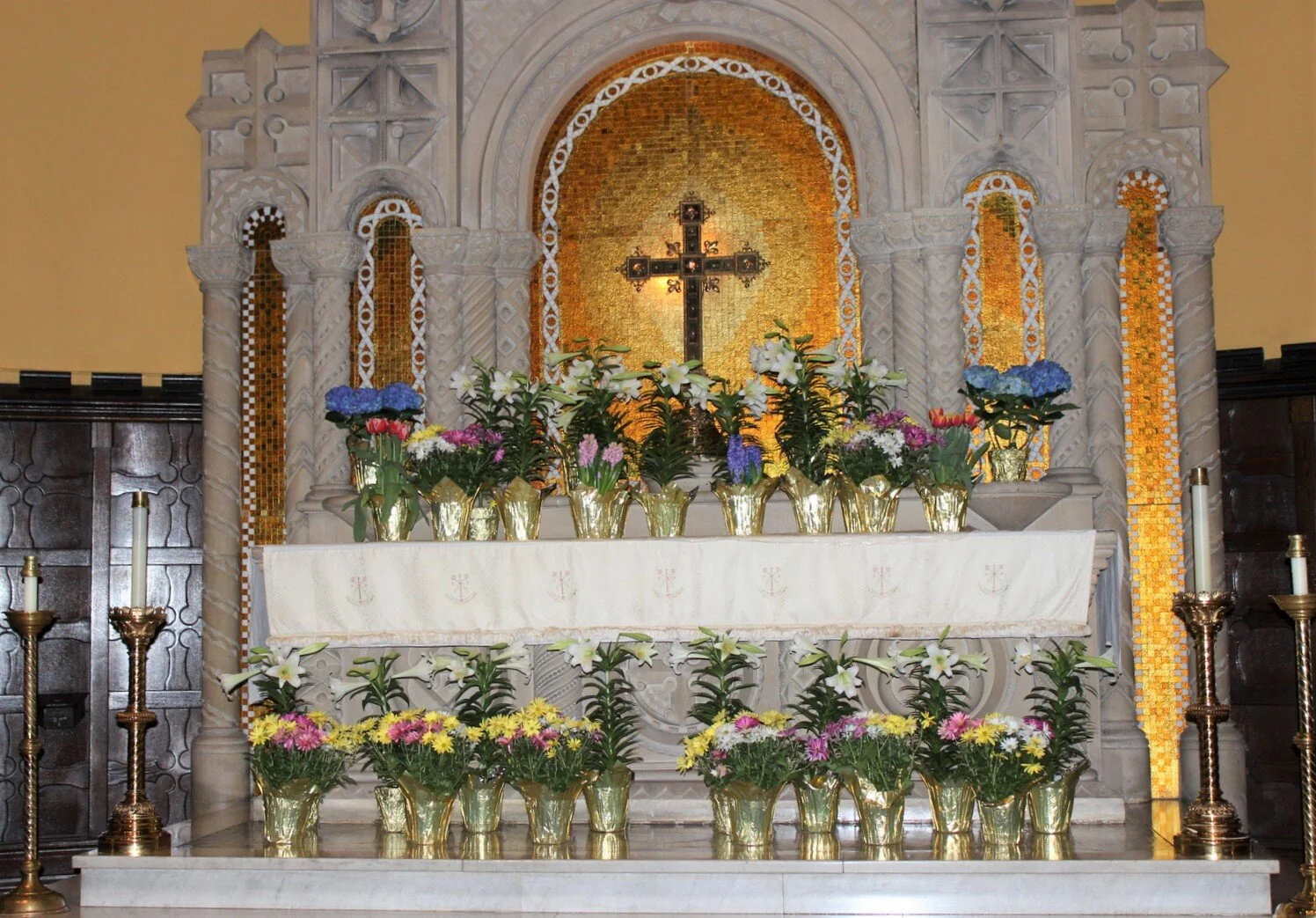
Our Liturgical Seasons at
St. Paul’s
The Christian liturgical observance grew out of Jewish worship. The earliest Christians continue to observe the Jewish Law and to keep the Sabbath but the soon the Lord's Day as it was called replaced the older observance. Sunday is the heart of Christian worship. Liturgy comes from the word that means "work of the people." The work being that the faithful gather to contemplate the life of Jesus from his birth to his Resurrection. The results of our work influences how we use our time. Time takes on a deeper meaning moving from a chronological movement to a God filled moment.
The following are the seasons that we observe at St. Paul’s:
Advent
Advent is a season observed as a time of expectant waiting and preparation for both the celebration of the Feast of the Nativity at Christmas, as well as the return of Jesus at the Second Coming.
The Four Sundays before Christmas
Advent means arrival. Ever since human beings have looked up to the starry skies, they have longed for the arrival of a child to bring us a better future. All of us share this deep longing. The four weeks of Advent give it a Christian expression.
Christmastide
Christmastide, which begins at sunset on December 24th is an annual festival commemorating the birth of Jesus Christ.
December 24th, The Feast of the Nativity
December 25th, The Birth of Jesus
At Christmas, Christians celebrate the birthday of the Prince of Peace. Yet throughout history Christians and others have perpetuated war and violence. This day invites all of us to pledge anew to make peace in ourselves and in the world.
Epiphany
Epiphany is the season of bringing the New Light into the World.
Three Kings Sunday
January 6th, The Epiphany
The Baptism of Our Lord
Christians celebrate today Christ’s Epiphany -- his shining-forth in the world. We can all celebrate the many ways in which divine light and truth shines forth in different religious traditions and in the events of our own life.
Lent
Lent begins with Ash Wednesday and culminates in Holy Week, which begin with Palm Sunday.
Ash Wednesday
Palm Sunday
Maundy Thursday
Good Friday
Holy Saturday
The word "Lent" originally meant "Springtime,” but has since been used by the church to describe the season leading up to Easter. In the seventh century, the church set the period of Lent at forty days (excluding Sundays) in order to remind people of the duration of Jesus' temptation in the wilderness.
During Good Friday, members of the Church try to understand at what cost Christ has won our redemption. In the solemn ceremonies of Good Friday, in the Adoration of the Cross, in the reading of the Passion, and in receiving the pre-consecrated Host, we unite ourselves to our Savior, and we contemplate our own death to sin in the Death of our Lord.
Eastertide
Eastertide is a festal season that focuses on celebrating the Resurrection of Jesus Christ.
Easter Vigil
The Feast of the Resurrection (Easter Sunday)
Ascension Day
The great 50 Days of Easter ends on the Feast of Pentecost. There is no Confession of Sin. The privilege of standing no kneeling during the Great Thanksgiving of the 50 Days dates back to the Council of Nicaea. No fasting or abstinence.
The Ascension of Jesus the Christian teaching found in the New Testament that the resurrected Jesus was taken up to heaven in his resurrected body, in the presence of eleven of his apostles, occurring 40 days after the resurrection.
Pentecost (Ordinary Time)
Pentecost is celebrated the 49th day (the seventh Sunday) after Easter Sunday, commemorates the descent of the Holy Spirit upon the Apostles and other followers of Jesus Christ while they were in Jerusalem celebrating the Feast of Weeks, as described in the Acts of the Apostles.
Whitsunday (Pentecost Sunday)
Feast of the Trinity (Trinity Sunday)
All Soul’s and All Saint’s Day (1st Sunday of November)
Pentecost (meaning “fiftieth day”) Sunday, occurs 50 days following Easter Sunday (counting Easter Sunday as the first day). Those 50 days span seven Sundays, so Pentecost is the seventh Sunday after Easter. Pentecost Day is also known as Whitsunday. The name is a contraction of "White Sunday". According to one interpretation, the name derives from the white garments worn by catechumens those expecting to be baptized on that Sunday.
The rest of the year following Pentecost is known as Ordinary Time. This time lasts from Trinity Sunday (the first Sunday after Pentecost) and ends with the Festival of Christ the King (last Sunday before the beginning of Advent).